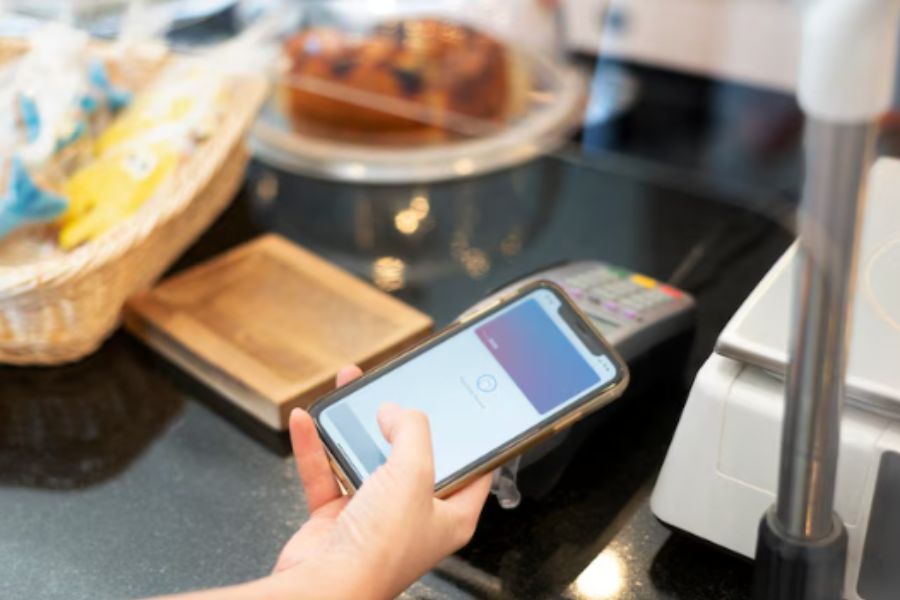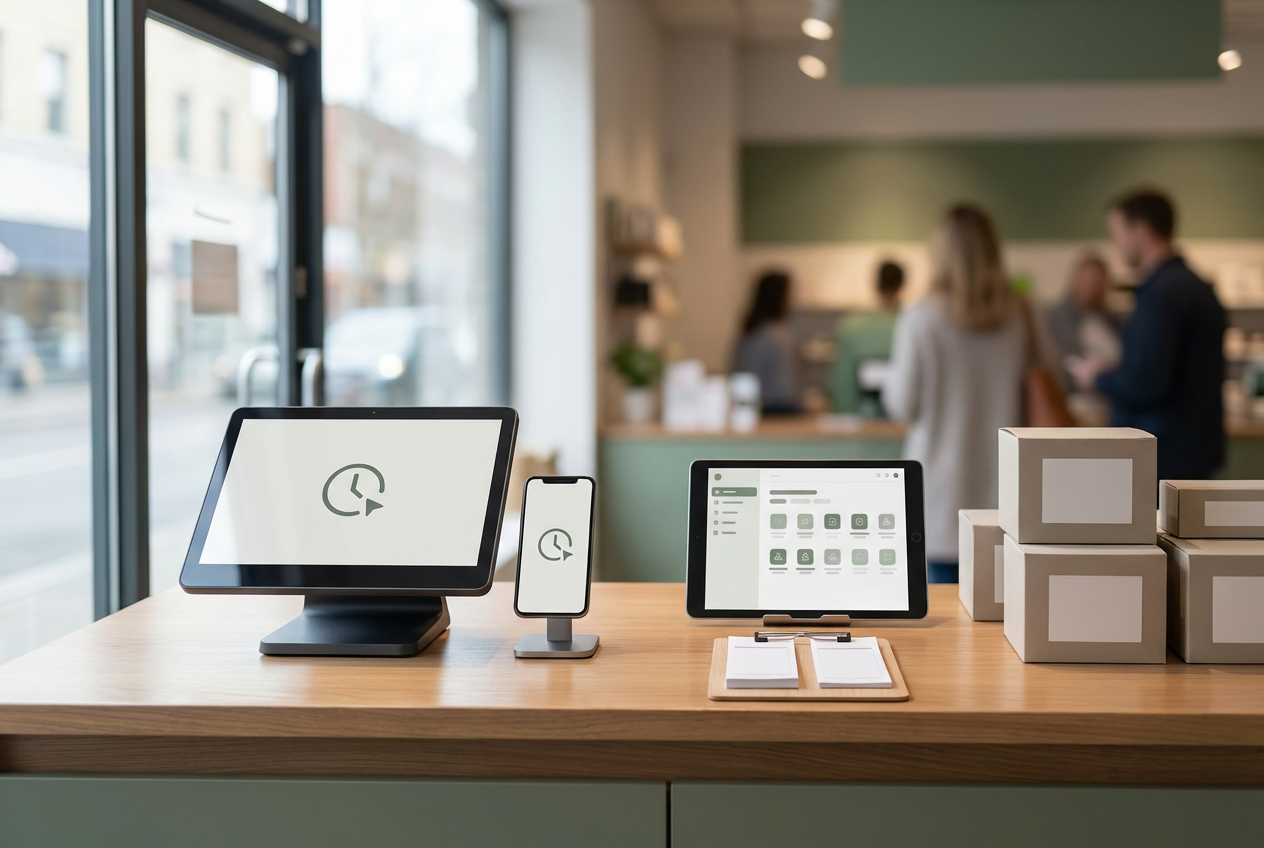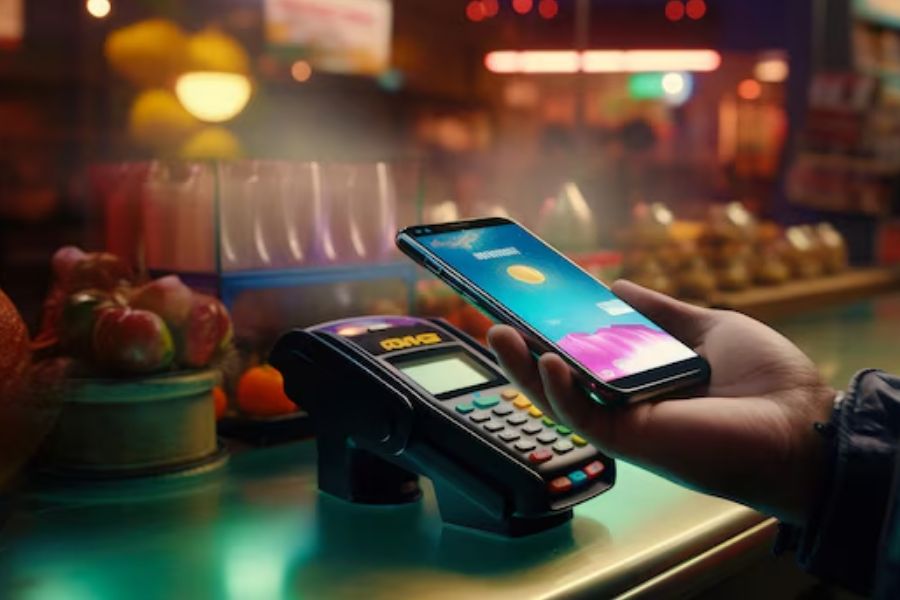Retail success today depends on more than just having a strong online presence or a well-managed physical storefront, it requires unifying the two. As customer expectations shift toward seamless, channel-agnostic experiences, businesses must eliminate operational silos to remain competitive. POS integration supports this shift through synchronization between eCommerce platforms and in-store systems.
This article provides insights and recommendations from ConnectPOS, exploring how integrated POS solutions act as a strategic link between digital and physical sales channels. These solutions enable real-time inventory visibility, centralized customer data, and consistent transactional logic across all platforms.
Highlights:
- eCommerce POS integration unifies inventory, order data, and product information across channels supporting BOPIS, BOPAC, and a consistent omnichannel shopping experience.
- From evaluating current systems and selecting compatible tools to training staff and post-launch monitoring, a structured integration plan ensures long-term success and ROI.
What is a POS integration?
POS (Point of Sale) integration refers to connecting a POS system with other software or systems to streamline business operations and share data. This can involve integrating with accounting software, e-commerce platforms, delivery services, or even other POS systems. By integrating, businesses can automate processes, improve data accuracy, and gain better insights into their operations.
How eCommerce POS Integration Works To Bridge Online And Offline Sales For Your Store
Omnichannel retailing remains a top priority for many businesses, as shown in a 2023 survey of Retail Consulting Partners. Over half of the respondents (54%) identified improving omnichannel integrations, such as buy online, pick up in-store (BOPIS) and buy online, pick up at curbside (BOPAC), as a key area of focus.

This is where eCommerce POS integration plays a central role. Connecting an eCommerce store with an in-store point-of-sale system allows businesses to unify product data, stock levels, and order history. This helps simplify order sourcing, reduce delays, and provide customers with the flexibility to choose how and where they complete their purchases whether it’s inside the store or from the curbside.
Real-time Inventory Synchronization
Real-time inventory synchronization is at the core of a connected retail ecosystem. When eCommerce platforms and POS integration are implemented properly, every stock movement, whether it happens in a physical store or online, is immediately reflected across all sales channels.
This reduces the risk of overselling, prevents stockouts, and supports a true omnichannel experience. For multi-location retailers, especially those dealing with high SKU turnover, real-time sync minimizes operational blind spots and enables accurate demand forecasting.
Beyond inventory visibility, this synchronization supports automated processes like low-stock alerts, centralized stock transfers, and dynamic restocking rules. It also empowers frontline staff to access inventory across warehouses or other outlets directly from the POS interface. As a result, customers can purchase in-store and choose to ship to home, or buy online and pick up in-store (BOPIS), with full confidence in product availability.
Centralized Order Management
POS integration for eCommerce consolidates orders from both digital and physical touchpoints into a single management interface. Instead of navigating separate systems, retailers can process, fulfill, and track orders from one dashboard, optimizing operations and reducing human error. This unification supports quicker response times to customer queries, better handling of returns and exchanges, and consistency across sales channels.
Furthermore, centralized order management is especially valuable during peak seasons or large promotions. It simplifies demand planning with a clear view of order inflow, fulfillment status, and delivery performance. Retailers gain full transparency into channel performance, enabling data-driven decisions on staffing, logistics, and marketing.
►►► Optimal solution set for businesses: Multi store POS, Next-gen POS, Inventory Management Software (MSI), Self Service, Automation, Backorders
Unified Customer Data
83% of executives report facing data silos when customer information stays confined to separate systems and among them, 97% agree those silos hurt business performance
When POS integration and eCommerce systems are siloed, customer interactions remain fragmented. Integration bridges that gap through the aggregation of customer data, purchase history, preferences, and loyalty status into a unified profile. Whether a customer buys online or in-store, the business gains a full 360-degree view, enhancing personalization and engagement strategies.
This consolidated data model also enables targeted campaigns based on behavior across all channels. For instance, a customer who browsed a product online but purchased a different item in-store can be retargeted with complementary products. Retailers can also identify high-value customers and tailor loyalty programs that span both digital and physical shopping environments.
Consistent Promotions and Pricing
Disparate systems often result in pricing conflicts and inconsistent promotions across channels, leading to customer frustration and loss of trust. E-commerce POS integration solves this through centralized control of pricing rules, discount logic, and promotional campaigns. Changes made in one system instantly propagate across all platforms.
This consistency guarantees a smooth customer experience. Whether someone discovers a promotion online and completes the purchase in-store, or vice versa, the messaging and pricing remain aligned. Retailers can also run omnichannel promotions like cross-channel bundles or loyalty discounts without manual reconciliation or duplicated effort from marketing and sales teams.
How To Start Using An eCommerce POS Integration To Boost Online And Offline Sales
Evaluate Your Existing Systems
Before initiating any integration, businesses must assess their current eCommerce platform, POS software, and backend infrastructure. Understanding existing limitations such as lack of API support, outdated hardware, or incompatible databases is critical to avoiding future roadblocks. This evaluation should also consider how data flows between inventory, sales, and customer systems, identifying where gaps or redundancies exist.
Additionally, retailers should map out all sales channels and operational workflows. Knowing which systems handle what, from inventory tracking to payment processing that helps define clear integration objectives. For example, if your online store frequently oversells due to delayed POS updates, inventory synchronization should be a top priority in the integration plan.
Select a Compatible eCommerce POS
Choosing the right eCommerce POS integration involves more than matching software logos. Businesses need to guarantee technical compatibility, smooth data syncing, and scalability.
The POS should natively integrate (or be easily integrated) with your eCommerce platform such as Shopify, Magento, or WooCommerce and support real-time communication between systems via API or middleware.
Retailers should also prioritize POS providers that understand omnichannel needs, providing modules for inventory management, customer insights, and unified promotions. Look for a provider with localized support, proven integration experience, and a track record in your retail segment. A well-aligned system not only reduces integration complexity but also accelerates ROI.
Plan Your Integration
Once tools are selected, build a detailed integration roadmap. This should cover data synchronization logic, testing procedures, timeline, and fallback plans.A phased rollout is often recommended, beginning with inventory sync, then order syncing, and finally customer data mapping. This structured approach helps isolate and resolve issues early.
During planning, involve both technical and business teams to align system capabilities with operational goals. Define what success looks like: fewer stockouts, faster order processing, consistent pricing, etc. Document data schemas, sync intervals, and integration endpoints clearly to support long-term scalability and easier maintenance
Onboard Your Team
POS integration only delivers value when your staff can use it effectively. Training should focus not only on system usage but also on new workflows across sales, inventory, fulfillment, and customer service. Floor staff should understand how inventory sync affects customer promises, while eCommerce managers should grasp how POS behavior impacts online operations.
Encouraging collaboration between teams from IT and operations to marketing which helps unify omnichannel thinking. Empower in-store staff to access digital customer profiles, or enable eCommerce teams to suggest local store pickups, creating synergy that reflects across the entire customer journey.
Launch and Monitor
A successful launch hinges on thorough testing and continuous monitoring. Before going live, simulate high-volume scenarios, test syncing under load, and verify data accuracy across platforms. Create real-world test cases like online orders with in-store returns to identify friction points.
Post-launch, monitor KPIs closely: inventory accuracy, fulfillment times, customer satisfaction scores, and revenue split between channels. Use dashboards to track sync failures or latency, and establish protocols for rapid troubleshooting. Integration is not a one-off project, it requires ongoing optimization to adapt to customer behavior and business growth.
How Much Does It Cost To Use An eCommerce POS Integration?
The total cost of using an eCommerce POS integration depends on several components. Careful planning helps retailers avoid unexpected expenses as they connect online and offline operations.
- Software Costs: Retailers usually pay a monthly or annual fee for POS software that connects to eCommerce platforms. Pricing depends on the provider, system capabilities, and number of store locations. Some plans include eCommerce support by default, while others require separate add-ons. Open-source systems may have no licensing cost, but they often involve setup work that requires technical skills.
- Hardware Costs: Running a POS system requires physical equipment such as receipt printers, barcode scanners, cash drawers, and terminals. Mobile setups might rely on tablets or smartphones, while larger stores often install fixed POS stations. The total hardware cost depends on store format, device preferences, and whether existing equipment is compatible with the POS system.
- Integration Fees: Connecting eCommerce platforms with a POS system may involve one-time implementation fees. These fees cover system configuration, data syncing setup, staff training, and initial testing. Some providers include basic integration in the subscription price, while others charge for custom connectors, API access, or third-party middleware.
- Support and Maintenance: Ongoing support is often part of the subscription plan, but some providers charge extra for priority support, extended hours, or dedicated account managers. Maintenance costs may also include system updates, bug fixes, and periodic audits to keep everything running smoothly. Businesses using self-hosted systems may need to hire technical teams for routine upkeep.
- Scalability Costs: As a business grows, the cost of using a POS integration system often increases. Adding new stores, devices, or users may require upgraded plans or additional license seats. Some systems charge based on transaction volume, while others apply fees per terminal or per eCommerce connection. Expansion may also require new hardware or more storage space.
Why ConnectPOS Is A Strategic Choice For POS Integration Of Online And Offline Sales
ConnectPOS provides POS integration between eCommerce platforms and in-store operations, allowing customers to place orders online and process payments, refunds, or exchanges in physical locations. Stock levels are updated automatically across systems, keeping product availability accurate in real time. This omnichannel retail POS works with various payment methods and aligns tax settings with your eCommerce backend, supporting local and cross-border transactions with consistency.
- On the Go: For retail teams and customers on the move, ConnectPOS allows quick access to product details through barcode scanning with mobile devices. It also supports a Progressive Web App (PWA) that identifies nearby shoppers and sends them promotional codes, helping drive immediate purchases based on real-world location and timing.
- Social Networks: ConnectPOS identifies customers across digital platforms, allowing businesses to maintain continuous engagement. It supports the delivery of targeted messages and real-time promotions directly through social media, making it easier to influence buying decisions through familiar online environments.
- In-Store: In physical stores, ConnectPOS introduces AI facial recognition to identify returning shoppers and display their purchase history to staff. This helps tailor recommendations without delay. Online products can be sold on-site, and staff can view stock availability across locations, improving decision-making and cross-store selling.
- Accessible with Any Hardware: ConnectPOS runs on a wide range of devices including POS terminals, desktops, laptops, tablets, and smartphones. Retailers can adapt the setup to suit their environment, whether it’s a traditional store counter or a mobile sales setup for pop-up events or warehouses.
- Speed Up Checkout: The system interface is built for simplicity, helping staff handle transactions with minimal training. A three-step checkout process keeps operations smooth and reduces customer waiting time, especially during peak hours.
- Efficient Operations: ConnectPOS supports POS integration with eCommerce platforms, payment providers, shipping services, and accounting tools. This setup eliminates repeated data entry and automates core tasks, helping teams avoid unnecessary work and maintain consistent system updates.
- Click-and-Collect and Payment Options: Retailers can easily manage click-and-collect operations using ConnectPOS. Staff can access online orders when customers arrive, speeding up fulfillment. The system also accepts multiple forms of payment, including split payments and layaways, accommodating various purchase preferences.
- Update Your Brick-and-Mortar Store Instantly: Stock updates made in ConnectPOS are synchronized with the main system in real time, keeping records accurate across platforms. Promotions such as “Buy X Get Y” or cart-level discounts can be configured directly from the POS. The system also supports in-store-only promotions, giving retailers the flexibility to tailor pricing strategies by channel.
- Create Omnichannel Retail Experiences with Mobile Devices: The ConnectPOS PWA lets customers shop independently, scanning barcodes and completing checkout on their own devices. This self-service model shortens the shopping journey and reduces staff involvement. In-app notifications keep customers informed of new arrivals and ongoing promotions, encouraging them to return and explore more products.
FAQs: POS Integration
What is a POS integration for eCommerce?
A POS integration for eCommerce connects your online store with your in-store point-of-sale system. It allows sales, inventory, customer, and order data to sync across platforms, keeping everything consistent between physical and digital channels.
Can I connect one POS system with different eCommerce platforms?
That depends on the flexibility of your POS provider. Some platforms support multiple integrations at once or allow switching between platforms without starting from scratch. It’s important to check whether the POS supports your current eCommerce system, especially if you use more than one (e.g., Shopify for one region and Magento for another).
Is it possible to run loyalty programs in POS across both channels?
Yes. Integrated POS systems often link with loyalty tools or include built-in functionality. Customers earn points from purchases made online or in-store, and the data stays connected to a single profile. This encourages repeat shopping and simplifies program management for the business.
Conclusion
The convergence of online and offline retail is not a trend – it’s the new standard. A robust POS integration is no longer optional for businesses seeking scalability, efficiency, and a unified customer experience. Aligning back-end systems, transaction flows, and inventory logic helps retailers move beyond fragmented operations and embrace data-driven commerce. The right integration strategy supports adaptability, better service, and long-term resilience in a complex market.
ConnectPOS helps retailers navigate this transition with tailored POS integration solutions built for omnichannel success. Reach out to the ConnectPOS team today to explore how your business can unify online and offline operations with confidence.
►►► Optimal solution set for businesses: Shopify POS, Magento POS, BigCommerce POS, WooCommerce POS, NetSuite POS, E-Commerce POS



